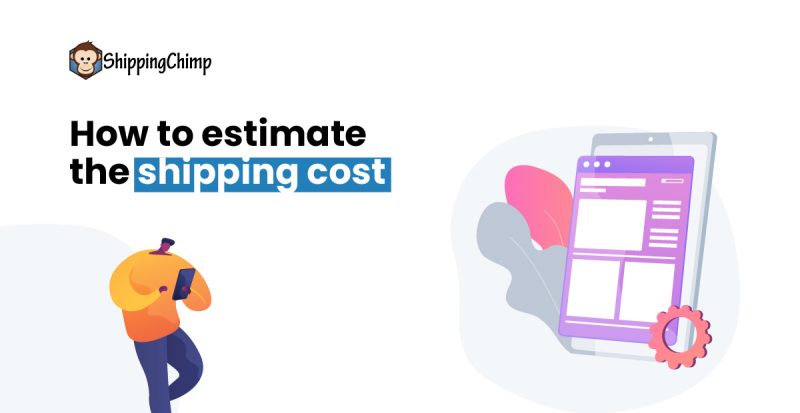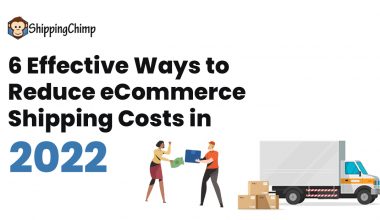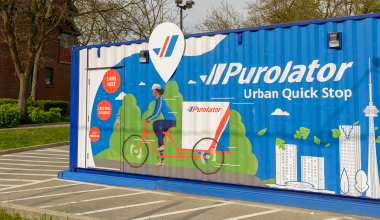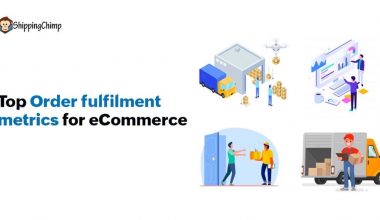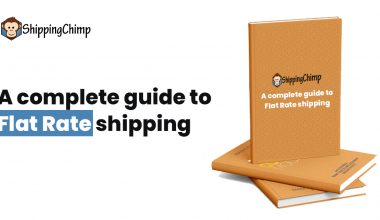Shipping is a crucial part of the post-purchase experience. Want to provide your customers with a frictionless shipping experience? Start with offering the best shipping rates. Trust us, you would not want your shoppers to abandon their carts, only because the shipping rates are high!
A recent survey has shown that 64.3% of US customers believe that price is an essential factor for shipping. But, the question is that, how do you calculate shipping costs that suit both your eCommerce store and the customers?
Well, don’t worry! In this post, we’ll cover exactly that. Let’s dive in!
What are shipping costs for your eCommerce store?
Shipping costs are any such costs that your eCommerce store may incur in the process of moving an item from the warehouse to the end customers. There is no hard-earned rule on the types of shipping costs. But here are some common types of shipping costs to estimate:
- Cost of packaging
- Cost of workers who carry the shipment packages
- The charges of the courier company
- Import/export fees for international shipping
But note that, shipping costs are not limited to these types of costs only. As you continue to read, there’ll be more shipping costs to know about.
How to determine shipping costs for your eCommerce store?
Shipping costs depend on multiple factors. Here are the most common variables that you should consider to estimate shipping costs:
1. Dimensions of the shipment package
No matter which shipping carrier you select, the dimension of the shipment has to be a major factor to decide the shipping costs. In this case, you need to take into account the size of the shipment package.
There is another factor called dimension weight and you can calculate that by multiplying the length, width, and height of your shipment package. Popular shipping carriers like UPS, USPS, FedEx consider either package weight or dimension weight, whichever is higher.
2. Destination of the end-customers
The second shipping cost estimator will be the end customer’s destination. The best way to identify this charge is by specifying shipping rates based on different shipping zones. For example, in the US, eight shipping zones are starting from Z1 to Z8. You can estimate the shipping cost based on the distance between Z1 to Z8.
Evidently, the higher the shipping zone, the greater is the distance. That means the shipping charges. That’s why international shipping is more expensive as compared to domestic shipping.
3. Time of delivery
Shipment costs can change based on the time of delivery. For example, if you want to complete international shipping within 2 days, it will cost you higher. In the domestic scenario, if you need the shipment package to reach from Z1 to Z8 within 2 days, it will definitely be expensive.
4. Value of the shipment
If you’re trying to deliver a highly valuable shipment package, you’re very likely to insure it. With shipping insurance, you may protect the parcel from getting stolen or damaged. However, the cost involved is pretty high.
Also remember that when deciding the pricing model for shipping, you need to mix and match. No one framework will work for all brands. In fact, a particular brand may also need to change its shipping model depending on the business requirements.
Here are the most common shipping approaches that eCommerce stores use most often:
Flat-rate shipping
Here are the essentials of this shipping model:
- You charge one flat rate on all shipment packages, irrespective of their dimensions, weights, destinations, and other relevant factors.
- This shipping model can be a good choice for customer acquisition. It provides customers with the freedom to purchase as much as they want without worrying about the shipping charges.
- Flat rate shipping is ideal for small businesses as it helps them increase their AOVs quickly. However, for large businesses, this may not be the right model. This model can increase their overall costs in the long run.
Free shipping
Free shipping is the favorite shipping model of all shoppers. Here are the details:
- For the free shipping model, you don’t charge any shipping fees to the consumers, irrespective of the shipment package’s type, weight, and size.
- This is again a good shipping model since it can easily entice the customers and motivate them to purchase again and again.
- However, for small businesses, this can be a major setback! When you’re not imposing a shipping charge, you’re absorbing the cost of shipping by yourself. That means reducing the profit margins in the long run.
Estimated shipping
Finally, one of the standard pricing models for your shipment packages is to calculate the shipment fee. In this case, you’ll have to consider the above-mentioned factors like package dimension, package weight, delivery time, distance, etc. But then again, estimating shipping charges on each product can be a tedious task. So, the ideal way to resolve this issue is through automation.
3 Popular shipping carriers and their shipping cost comparison
Most of the eCommerce stores rely on the three popular shipping carriers like USPS, UPS, and FedEx. Let’s find out more about their shipping costs:
1. FedEx
FedEx focuses on the dimensional weight of the shipment packages. Additionally, they offer different delivery timings and adjust the shipping charges accordingly. You can estimate the shipping charges here.
2. USPS
If you’re going for ground shipping, USPS has to be the cheapest shipping carrier for your store. They follow local routes to deliver and accordingly, the shipping costs are much lesser. Use the USPS shipping calculator to get an idea.
3. UPS
UPS is another popular shipping carrier that follows the dimension weight framework to estimate shipping costs. You can estimate the shipping rates here.
Here is the comparison of shipping costs for all three of these shipping carriers:
Create a frictionless shipping experience with ShippingChimp
ShippingChimp is Canada’s #1 eCommerce shipping carrier. eCommerce businesses can benefit from up to 53% discount on shipping costs, free pick up, real-time tracking alerts and free insurance up to $100. The best part of shipping with ShippingChimp is that businesses can pay as they ship without any minimum volume commitment.
Here’s how ShippingChimp helps you:
- Free Pickup
- Live-Track Shipment tool
- An efficient Returns Center
Want to know more? Start a free trial now!
- Cheapest Shipping For Small Business - October 21, 2024
- Best Shipping for Small Business - October 18, 2024
- Does Purolator Deliver on Weekends? - October 10, 2024
